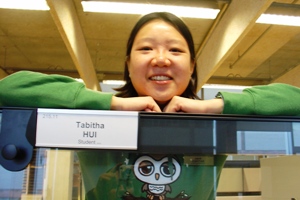Tel: 604.822.8181
Fax: 604.822.8180
E-mail: t.hui@oceans.ubc.ca
Supervisor: Dr. Andrew Trites
Education: Graduate Diploma in Spatial Information Science with Honours (University of Tasmania)
BSc with Honours in Zoology (University of Tasmania)
BSc with majors in Zoology and Marine Biology (University of Melbourne)
Research Interests: I have wanted to be a zoologist for as long as I can remember. My experience with animals is diverse, ranging from research on the foraging behaviour of honeybees in Portugal and population ecology of the vole in Ilmen Reserve, Russia to scrubbing elephants and cleaning shark aquariums. Most of my research, however, falls in the three major areas of behaviour, conservation and ecology.
During my honours year, I worked on resource partitioning and interspecific territoriality in flame, scarlet and dusky robins. I graduated with a first class honours degree in zoology and was awarded the Ralston Trust Prize for the best honours thesis in zoology in 2005. Thereafter, I enrolled in a Graduate Diploma in Spatial Information Science in order to gain skills (in particular, GIS skills) which would facilitate my future research in ecology and conservation. My research project for this course examined the relationship between orange-bellied parrot (a critically endangered species) and sugar glider (a species introduced to Tasmania from the Australian mainland and known to prey on orange-bellied parrots) distributions.
I am particularly interested in spatial ecology (where animals occur when and why, how they interact with each other and the environment) and use GIS to facilitate much of my research. I recently completed an internship at the Smithsonian Environmental Research Center analysing the incidence of marine invasive species in relation to ballast water discharge and ship arrivals/movements. For my Masters research, I will be examining the distributions of Steller sea lions, their prey species and associated fisheries in order to assess the potential for competition between sea lions and fisheries in Alaska. The demonstration of competition requires not only that species (or in this case, between fisheries and sea lions) overlap in resource use, but also that those resources be in limited supply. I will therefore be building an energetics model for the Steller sea lion and comparing this to the total energy available from its prey abundance after taking into account the impacts of fisheries. I will also be building habitat suitability models for the Steller sea lion in order to predict their spatial distribution. It is envisaged that the results of this research will shed light on the ongoing debate on whether there is competition between fisheries and sea lions.

